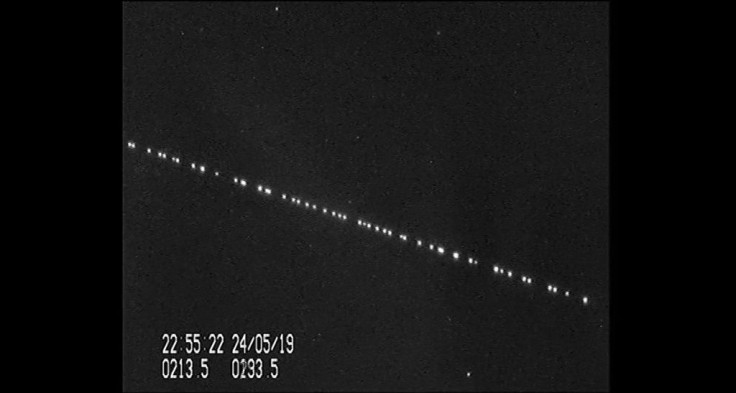SpaceX's Starlink Project Slammed By Astronomers In New Study

KEY POINTS
- Astronomers released a study criticizing satellite constellations
- Ground-based observations are affected by satellites
- There could be 50,000 satellites in low-Earth orbit in the near future
A team of astronomers released a new study explaining how satellite constellation projects such as SpaceX’s Starlink are harming ground-based astronomy. This is the latest move by astronomers to criticize the effects of thousands of satellites in low-Earth orbit.
After Elon Musk launched the first batch of Starlink satellites, he and his company SpaceX were slammed by astronomers due to the effect of the project on astronomical observations. They noted that the brightness and the sheer number of the satellites are obstructing Earth-based astronomy.
Earlier this month, three astronomers from Italy’s INAF-Osservatorio Astronomico di Roma released a new study outlining the effects of satellite constellations on scientific observations of the sky conducted from Earth.
In the study, astronomers Marco Scardia, Stefano Gallozzi and Michele Maris warned that once the companies such as SpaceX and OneWeb deploy their own satellites for their projects, there would be about 50,000 spacecraft in low-Earth orbit.
“Depending on their altitude and surface reflectivity, their contribution to the sky brightness is not negligible for professional ground-based observations,” the astronomers wrote.
“With the huge amount of about 50,000 new artificial satellites for telecommunications planned to be launched in medium and low-Earth orbit, the mean density of artificial objects will be of >1 satellite for square sky degree; this will inevitably harm professional astronomical images,” they continued.
Due to the number of satellites that are expected to populate low-Earth orbit, the astronomers are worried conducting ground-based astronomical observations will no longer be possible. As seen in previous reports, the brightness of satellite constellations can leave streaks of light in astronomical images.
In addition to obscuring photos of natural cosmic objects, astronomers warned that satellites could also disrupt the wavelengths used by equipment for radio-astronomy.
“Serious concerns are common also to other wavelengths eligible for ground-based investigation, in particular for radio-astronomy, whose detectors are already saturated by the ubiquitous irradiation of satellites communication from space stations as well as from the ground,” the astronomers stated.
Musk has not yet responded to the study or the criticisms of astronomers, but in May last year, he discussed the possibility of making the Starlink satellites less reflective.
© Copyright IBTimes 2025. All rights reserved.





















